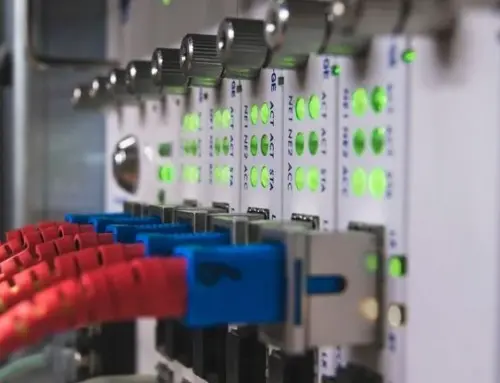
Why AI Security must be part of your Incident Response Plan.
Why AI and Cybersecurity: Best Practices Security for Cyber Incident Response Plans
In an era where cyber threats are evolving at an unprecedented pace, the need for robust cybersecurity measures has never been more critical. At Teamwin Global Technologica, we are committed to empowering enterprises with comprehensive security solutions that safeguard your infrastructure and ensure your continued success. As part of our dedication to your security, we emphasize the importance of effective incident response strategies that leverage the power of AI to anticipate and mitigate potential threats. Ensuring your security posture is fortified against cyber incidents is not just about protection—it’s about ensuring peace of mind and business continuity.
Understanding Incident Response
Incident response is a structured approach to addressing and managing the aftermath of a security breach or cyberattack. The primary aim is to handle the situation in a way that limits damage and reduces recovery time and costs. A well-crafted incident response plan is essential to fortify your business against potential threats, ensuring that your organization can quickly detect, respond to, and recover from a cyber incident. By automating incident response processes through AI technologies, organizations can enhance their threat detection capabilities and improve their overall security posture, ensuring a swift and effective incident management process.
What is an Incident Response Plan?
An incident response plan is a set of predetermined strategies and procedures designed to detect, respond to, and recover from a cybersecurity incident effectively. This plan serves as a roadmap for your incident response team, outlining the steps to be taken in the event of a data breach or other security incidents. It ensures that all response actions are coordinated and executed in a timely manner, minimizing the impact on your operations. Utilizing AI in incident response plans can automate detection and response efforts, allowing your security professionals to focus on critical tasks that require human intervention.
Key Components of an Incident Response Plan
Effective incident response plans incorporate several key components to ensure they remain relevant and robust in the face of evolving cyber threats. These components include:
- A clear communication plan
- Defined roles and responsibilities
- Detailed procedures for detection and response
- Guidelines for deploying security tools and AI systems to enhance threat intelligence and facilitate automated response actions
Additionally, ongoing risk management and continuous improvement are vital. By integrating machine learning and AI models, organizations can enhance their threat detection capabilities, providing a proactive approach to cybersecurity incident response.
The Importance of Cybersecurity in Incident Response
Cybersecurity plays a pivotal role in the incident response process, as it is crucial for protecting sensitive data and maintaining trust with customers. In an environment where insider threats and sophisticated cyber attacks are increasingly prevalent, a strong cybersecurity foundation is essential for effective incident management. By leveraging AI technologies, organizations can automate incident response processes, reducing response time and enhancing the overall security of their systems. Ensuring a robust security posture not only protects your organization’s integrity but also reinforces the trust and satisfaction of your customers—an assurance that their data is secure and their interactions with your enterprise are valued and protected.
The Role of AI in Cyber Incident Response
How AI Enhances Threat Detection
At Teamwin Global Technologica, we recognize the paramount importance of empowering your cybersecurity defenses with advanced AI technologies. AI enhances threat detection by providing real-time, continuous monitoring of potential cyber threats, including those lurking on the Dark Web. Our solution, TeamWin, offers real-time Dark Web monitoring to identify and neutralize threats before they impact your organization. By harnessing AI’s capabilities, we enable your security team to swiftly detect anomalies and respond proactively, minimizing the risk of data breaches and other cybersecurity incidents. This proactive approach ensures your enterprise is fortified against evolving cyber threats, safeguarding your infrastructure and ensuring business continuity.
Machine Learning in Cybersecurity Incident Management
Machine learning is a cornerstone of effective incident management, as it empowers AI systems to learn from vast datasets and enhance threat detection capabilities. At Teamwin Global Technologica, we leverage machine learning to automate incident response processes, allowing for faster and more accurate identification of security incidents. By continuously analyzing patterns and trends, machine learning models can predict potential security threats and enable security professionals to implement timely response strategies in their cybersecurity incident response plans. This not only reduces response time but also enhances the overall security posture of your organization, ensuring that your incident response framework is both robust and adaptive in the face of ever-evolving cyber threats.
AI Models for Effective Incident Response
AI models are essential for orchestrating an effective incident response strategy. These models facilitate automated response actions by analyzing security incidents and determining the best course of action. At Teamwin Global Technologica, we utilize AI models to streamline incident response automation, ensuring that your response efforts are fast and precise. By integrating AI into your incident response plan, you can automate detection and response tasks, reducing the workload on your security team and allowing them to focus on more complex issues that require human intervention. This not only enhances your security operations but also reinforces your commitment to safeguarding sensitive data and maintaining the trust of your customers through effective incident handling.
Best Practices for Developing Cyber Incident Response Plans
Creating a Comprehensive Incident Response Framework
Developing an effective cybersecurity incident response plan is fundamental to ensuring your organization’s security posture is resilient against cyber threats. A comprehensive framework should include several key components:
- A thorough communication plan that enables clear and concise information flow during a security incident.
- Delineation of roles and responsibilities to ensure every member of the incident response team is aware of their specific duties.
By incorporating AI technologies, organizations can enhance threat detection capabilities, allowing for automated response actions that minimize response time and maximize efficiency. This proactive approach not only addresses potential threats but also fortifies your infrastructure, ensuring business continuity and safeguarding sensitive data.
Establishing an Incident Response Team
Establishing a dedicated incident response team is a critical step in managing cybersecurity incidents effectively. At Teamwin Global Technologica, we pride ourselves on assembling highly trained and motivated teams that are prepared to address any security incident with precision and expertise. An incident response team should be composed of security professionals who specialize in various aspects of cybersecurity, including incident handling and threat intelligence. Here are some key components of an effective incident response team:
- Specialization in areas such as threat intelligence and incident management is crucial for effective security incident response.
- Utilization of AI systems to automate incident response processes.
By focusing on complex threat mitigation strategies, these teams ensure a swift and thorough response to any cyber incident, reinforcing the trust and confidence of your clients.
Automation in Incident Response Processes
Automation plays a pivotal role In modernizing incident response processes, enabling organizations to respond to cybersecurity threats more swiftly and accurately using AI tools. By leveraging AI models, routine tasks such as threat detection and response actions can be automated, reducing the workload on your security team and optimizing incident management efforts. Automated incident response not only enhances the overall security of your operations but also improves response time, ensuring that when a security incident occurs, threats are neutralized before they can escalate. This strategic use of AI in incident response empowers security teams to focus on strategic initiatives, ultimately providing a more robust defense against data breaches and insider threats.
Response Steps in Cyber Incident Management
Initial Detection and Analysis of Cyber Incidents
When it comes to managing cyber incidents, the initial detection and analysis phase is of utmost importance. At Teamwin Global Technologica, we understand that timely and accurate detection of security incidents is critical for minimizing damage and ensuring swift recovery. Our state-of-the-art AI systems are designed to monitor your networks continuously, utilizing machine learning algorithms to identify potential security threats in real-time. By leveraging our advanced threat detection capabilities, your incident response team can quickly analyze security alerts, differentiate between false positives and genuine threats, and initiate appropriate response strategies. This proactive approach not only fortifies your security posture but also provides peace of mind, knowing that your organization is well-protected against evolving cyber threats.
Containment, Eradication, and Recovery
Once a cyber incident has been detected and analyzed, the next crucial steps are containment, eradication, and recovery. Containment involves isolating affected systems to prevent further damage, while eradication focuses on removing the threat from your network. At Teamwin Global Technologica, we empower your security team with automated incident response tools, enabling swift containment and eradication of cybersecurity incidents. Our AI models guide security professionals through the recovery process, ensuring that systems are restored to full functionality while minimizing downtime. By implementing these response actions effectively, we help you maintain the integrity of your operations, safeguarding your sensitive data and reinforcing trust with your clients.
Post-Incident Review and Improvement
After successfully managing a cyber incident, it is imperative to conduct a thorough post-incident review and identify areas for improvement. This step involves analyzing the incident response process, evaluating the effectiveness of response strategies, and identifying any gaps in your incident response plan. At Teamwin Global Technologica, we are committed to continuous improvement and risk management, ensuring your incident response framework remains robust and adaptive. By utilizing AI technologies, we provide insights into threat intelligence and response efforts, empowering your organization to enhance its security operations and be better prepared for future cybersecurity incidents. This dedication to improvement not only strengthens your overall security but also assures your clients of your unwavering commitment to their protection.
Challenges and Considerations in AI Incident Response
Data Security and Privacy Concerns
In the realm of AI incident response, organizations can leverage artificial intelligence tools to improve their security information and event management systems. data security and privacy concerns are paramount. As AI systems process vast amounts of sensitive data, it is essential to ensure that these systems comply with data protection regulations and maintain the confidentiality of information. At Teamwin Global Technologica, we prioritize the safeguarding of your data by implementing robust security solutions and privacy measures. Our AI-driven incident response strategies are designed to protect sensitive data while enhancing threat detection capabilities. By addressing these concerns, we reassure our clients that their data is secure and that our AI systems are deployed responsibly, maintaining the highest standards of privacy and security.
Limitations of AI in Cybersecurity
While AI offers significant advantages in cybersecurity, it is important to recognize its limitations in incident handling. AI systems, though powerful, are not infallible and can be susceptible to adversarial attacks or errors in threat detection. At Teamwin Global Technologica, we acknowledge these challenges and emphasize the importance of human oversight in AI incident response. By combining AI technologies with the expertise of security professionals, we ensure a balanced approach that mitigates potential security threats and enhances the effectiveness of incident response strategies. This synergy between AI and human intelligence ensures that our clients receive comprehensive protection against cyber threats, reinforcing their trust and confidence in our solutions.
Future Trends in AI and Cyber Incident Response
The future of artificial intelligence in cyber incident response is promising, with advancements in AI technologies offering new opportunities for enhanced security measures. As AI systems continue to evolve, we anticipate improvements in threat detection accuracy, incident response automation, and predictive analytics. At Teamwin Global Technologica, we are committed to staying at the forefront of these developments, continuously enhancing our security solutions to meet the evolving needs of our clients. By embracing future trends and innovations in AI, we empower organizations to stay ahead of cyber threats, ensuring that their security posture remains resilient and adaptable in an ever-changing digital landscape. This forward-thinking approach reinforces our dedication to safeguarding your enterprise and ensuring tomorrow’s success in the face of evolving security threats.
5 Surprising Facts About Why AI Security Must Be Part of Your Incident Response Plan
- AI can analyze vast amounts of data in real-time, allowing for faster detection of security incidents compared to human analysts.
- Incorporating AI into your incident response can reduce the average time to respond to threats by up to 60%.
- AI-driven tools can identify patterns and anomalies that human teams might miss, enhancing the overall security posture.
- Organizations that leverage AI in their incident response plans experience a 30% lower rate of successful cyberattacks.
- AI technology can adapt and learn from new threats, making your incident response plan more resilient over time.
What is the role of AI in incident response?
AI plays a crucial role in incident response by enhancing the ability to detect, analyze, and respond to security incidents. Through machine learning algorithms, AI can identify patterns in security data, enabling quicker identification of threats and more effective incident response efforts. AI systems can also automate routine tasks, allowing security teams to focus on complex issues that require human expertise.
How can AI enhance cybersecurity incident response?
AI enhances cybersecurity incident response by improving the speed and accuracy of threat detection. With the evolving threat landscape, traditional security methods may fall short. AI can automate incident detection, analyze vast amounts of data, and provide actionable insights. This leads to a more proactive approach in mitigating security risks and improving the overall security posture of an organization.
What are the best practices for developing an incident response plan?
Best practices for developing an effective incident response plan include clearly defining roles and responsibilities, identifying critical assets, and ensuring that all team members are trained on the incident response process. Incorporating AI and machine learning tools can also enhance the effectiveness of the response by automating tasks such as documenting the incident and analyzing security events.
What is the importance of incident response services?
Incident response services are vital for organizations to quickly and efficiently handle security incidents. These services provide expertise and resources to detect, respond to, and recover from cyber incidents. Having a dedicated computer security incident response team (CSIRT) ensures that there are trained professionals available to manage incidents, thus minimizing damage and restoring operations swiftly.
How do security orchestration and AI work together in incident management?
Security orchestration integrates various security tools and processes to streamline incident management. When combined with AI, it allows for automated responses to security incidents, reducing the time needed for incident response steps. This synergy enhances the overall effectiveness of security operations and ensures that organizations can respond to threats in real-time.
What steps can organizations take to automate incident response?
Organizations can automate incident response by implementing AI-driven tools that facilitate endpoint detection and response (EDR), security patches, and threat intelligence. By developing automated workflows for common incidents, teams can improve their efficiency and focus on more complex threats, ultimately enhancing their cyber resilience.
Why is documenting incidents critical in incident response plans?
Documenting incidents is critical as it provides a record of what occurred, how it was handled, and the lessons learned. This information is invaluable for improving future incident response efforts and developing a robust cybersecurity framework. It allows teams to analyze the effectiveness of their response and adjust strategies accordingly, ensuring continuous improvement in handling security incidents.
How can organizations ensure effective incident detection?
To ensure effective incident detection, organizations should implement comprehensive monitoring systems that utilize AI and machine learning for real-time analysis of security data. Regularly updating security tools and patches, along with continuous training for the incident response team, can enhance the organization’s ability to quickly identify potential threats and respond appropriately.
What is the significance of a cyber incident response plan?
A cyber incident response plan is significant because it provides a structured approach to handle cybersecurity incidents. It outlines the incident response steps, roles, and responsibilities, ensuring that all team members are prepared to respond effectively. By incorporating AI and automation into the plan, organizations can enhance their preparedness and improve their capacity to manage incidents promptly.






